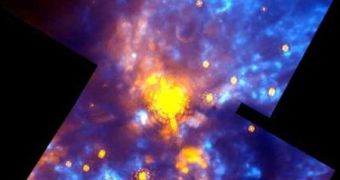Studying the particular molecular orientation, or the “handedness,” of organic molecules is one of the fields of study that hold the promise to answering one of humankind's basic questions, namely where we came from. For a long time, astronomers have known that certain celestial bodies, comets included, carry with them precursor molecules to basic life, and some even go as far as saying that it's some of these comet impacts that seeded life on Earth. In a new scientific experiment, a nanosatellite will carry some organic molecules to orbit, in an attempt to determine what causes their left-handedness.
The main target of investigation will be amino-acids, the building blocks of proteins. These compounds exist in two “chiral,” or mirrored, forms, one with a left-hand spin, and another with a right-hand spin. Biologists say that, in most of the organisms living on Earth, regardless of their size or shape, left-hand amino-acids are always preferred over their mirrored reflection, for some reason that has yet to be determined. The use of right-hand amino-acids is fairly rare, and almost always for things other than protein synthesis, Space reports.
“Outside of biology the ratio of these chiral forms is 50-50, so we want to understand the starting point of life's preference for left-handed amino acids,” NASA Ames Research Center expert Orlando Santos explains. He leads a team of scientists at the Center that is currently working on creating a small-scale satellite, able to carry organic molecules in space, and determine if that environment has any effect on the chirality of the molecules, and on what kinds of amino-acids are used for creating proteins. These experiments could provide an explanation for the origins of homochirality.
“Other researchers in this field have tried to reproduce space conditions in a lab. But artificial systems are just that. We want to test the theories in a natural environment,” the scientist adds. The new mission is developed as part of the Astrobiology Science and Technology Instrument Development and Mission Concept Studies. Scientists hope to determine which of the factors permeating the Universe is responsible for shifting chiralities, and thus far their best guess has been circularly polarized ultraviolet light.
“Both hands decompose in the light, so it turns into a race toward total destruction. An excess of one hand can be made this way, but there will only be a small percentage of the original material left over,” Arizona State University scientist Sandra Pizzarello concludes.

 14 DAY TRIAL //
14 DAY TRIAL //